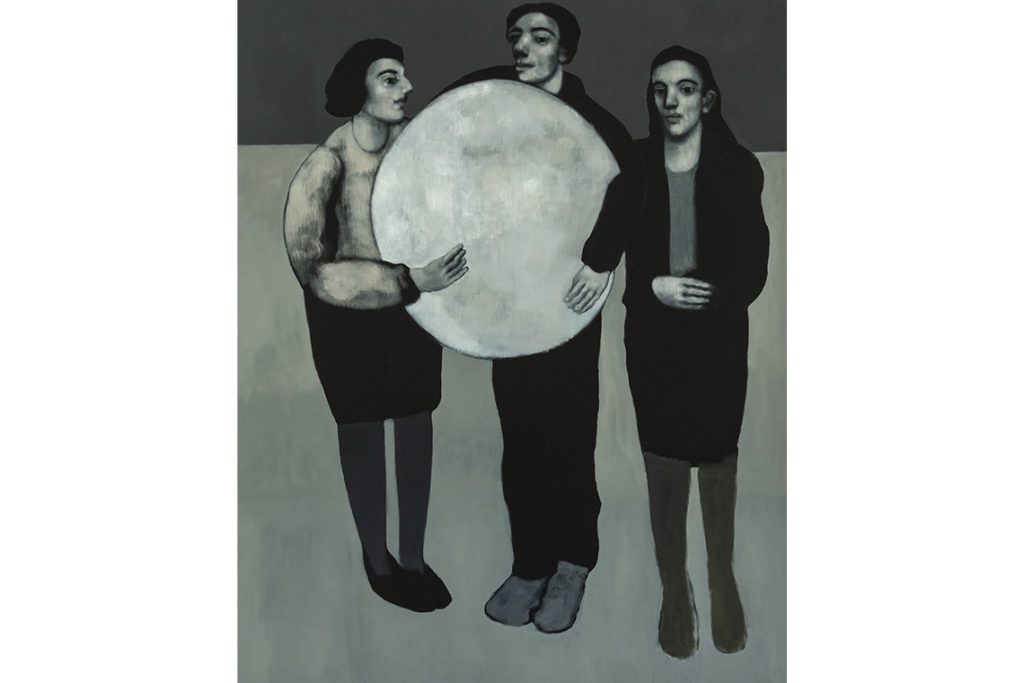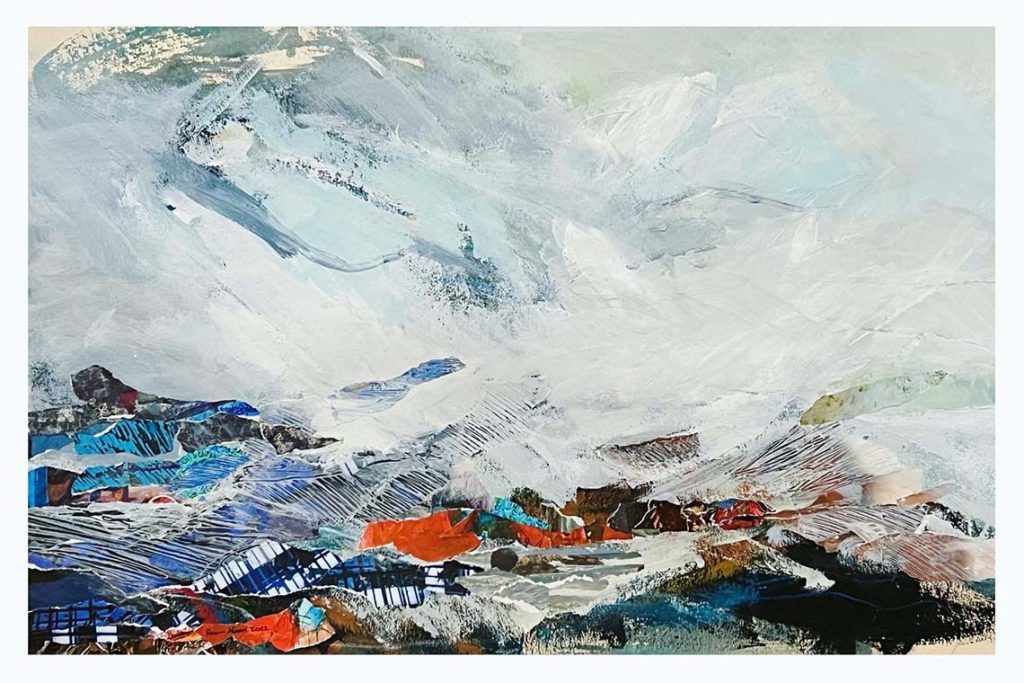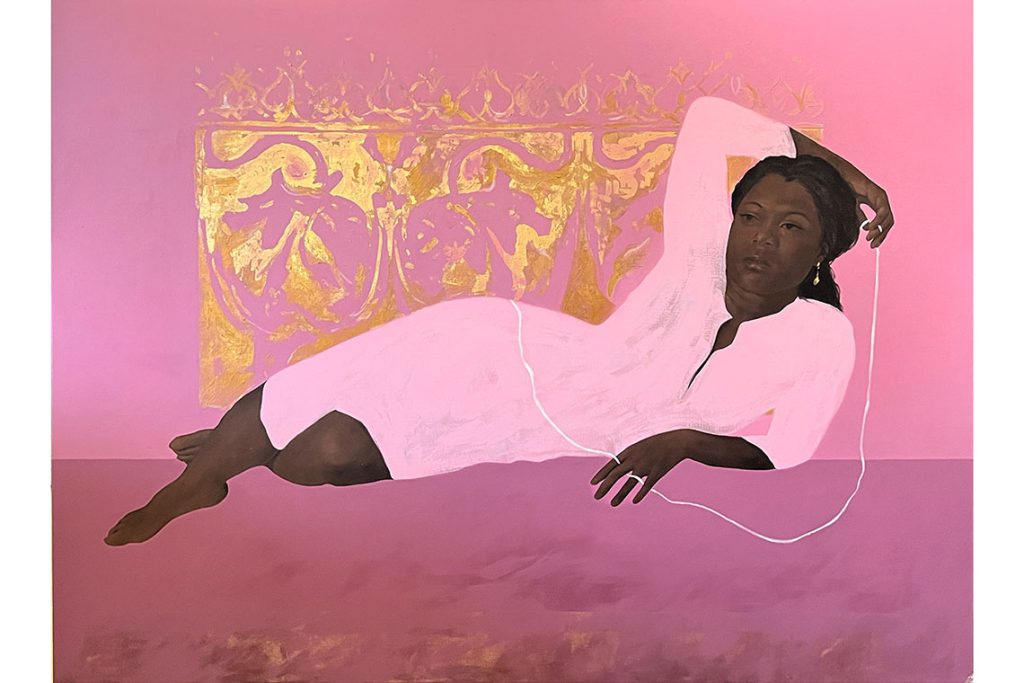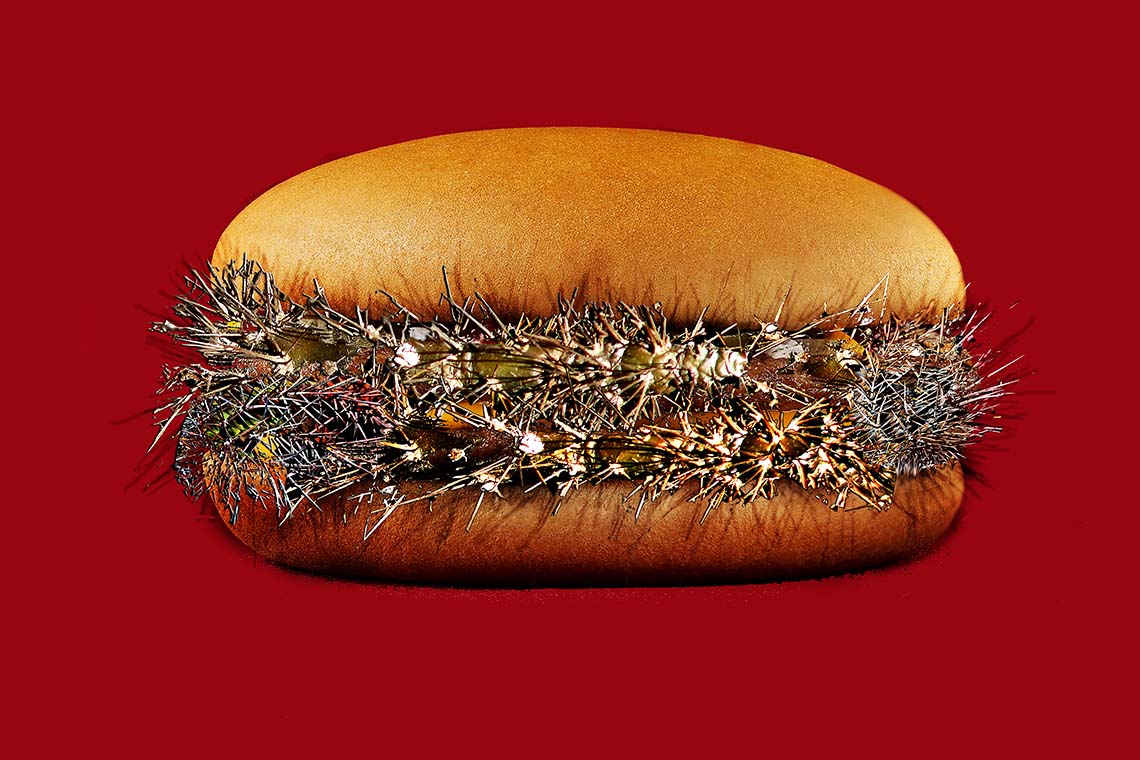The latest edition of Art Cairo demonstrated a more outward-facing approach, with an expanded selection of galleries providing clues to what the future might hold for Egypt’s leading art fair.
For its sixth edition, Art Cairo took place this year in a new wing of the Grand Egyptian Museum and ran under the title Peace to All Nations, selected by the fair’s team led by founder Mohamed Younis. A commissioned artwork by Nizar Sabbour at the entrance featuring olive trees and doves set the tone of this theme, the premise being that art can serve as a unifying force and place of respite for a region in turmoil. As I ambled through the eclectic selection presented by the 23 galleries, it was easy enough to forget the troubles of the outside world. What was less straightforward was sifting through the works on offer and unpicking the true gems from the homogenous mass. It ultimately proved a worthwhile endeavour.
The fair’s objective of providing a place of inclusivity and calling for unity across the region chimed clearly among the artists represented this year, around 30 per cent of whom are currently displaced from their home countries. Gallerist Ghada Kunash, founder of Dubai’s Fann À Porter, which focuses primarily on emerging artists, pointed out that only one of the gallery’s artists at the fair is currently working from their home country. The irony that displacement enables artists to show their art more easily abroad was not lost on her. “When they are displaced, when they are somewhere else, we see them more, we know them more,” she explained. “We meet them face to face, they get more exposure. People are also keen to show these artists and help them.”

Elsewhere, the turmoil of the region continued to intrude. Statues of crumbling buildings in Beirut by Bassam Kyrillos at Maya Art Space eerily echoed what many of us have been seeing on our newsfeeds for the past year and cast the dark shadow of war over an otherwise cheerful selection of work, which aligned more closely with what gallerists have come to expect of local collectors rather than catering more overtly to an international crowd. Participants in the fair still “cater [largely] to Egyptian tastes, with vibrant, colourful pieces that resonate with what people here love and appreciate,” explained Younis.
Amid a sea of breezy colours and occasionally rather bland content (think collages of flowery patterns that would not be out of place in a standard hotel lobby) were some more intriguing pieces. Dutch gallery SANAA, invited for the first time this year as one of two participating European galleries (the other being Paris-based Art du Temps), offered a decidedly more sombre selection. Syrian artist Raafat Ballan was the star of the show in his solo booth at SANAA, with a selection of moody and lightly distorted figure paintings unlike anything else at the fair. Exhibiting just one artist whose work is full of dark undertones in a context where audiences may be more accustomed to less challenging visuals is always risky, but on this occasion appears to have paid off, with the gallery reporting that interest in Ballan’s works had exceeded expectations.

Gallery One from Ramallah was another newcomer, making the challenging journey out of the West Bank to attend the fair. The feeling of respect extended to the gallery staff, whose mere presence served as a direct human reminder of the fair’s theme, was tangible and heartfelt. Small-scale collages of landscapes by Reem Masri particularly captured the attention of visitors to the booth and were supported by a varied selection of work by more established and other newly emerging Palestinian artists alike. Stories about the creative logistics of transporting artwork out of the West Bank and then to Cairo – including stuffing smaller pieces into suitcases to avoid issues with border control in Israel – were simultaneously sobering and heartwarming.
In an art scene that can sometimes feel at once both insular and overwhelming, Art Cairo is uniquely placed to fill some of the inevitable gaps that emerge, not only between galleries, artists and collectors but also in terms of specific genres and periods. Misr, the prominent Egyptian gallery established in 2011, maintained an early focus on Egyptian artists (both young and old) but later shifted emphasis to showcase pioneering Arab artists. Its selection this year included internationally recognised names such as Tagreed Darghouth, whose two works particularly stood out. “So many collectors here have no idea about the Arab art scene outside of Egypt,” remarked gallery founder Mohamed Talaat. “We’ve worked with many art scene players here in Egypt over the years, from collectors to students, to shed light on the wider art scene in the MENA region.”

Previously, galleries might have felt able to anticipate the tastes of those attending the fair, but the greater international exposure prompted by the newly revamped programme and opening of the Grand Egyptian Museum have changed the landscape. This shift may have left some gallerists unsure of what to present, with some booths seemingly catering to no one and everyone all at once. Meatier pieces of artwork such as sculptures of suitcases punctured by what looked like holes made by a bomb coexisted alongside tamer offerings of smoothly sculpted female forms and cutely rounded animals.
The estimated 25,000 visitors to this year’s fair represented a sharp increase on previous editions, a spike perhaps enhanced by tourists who were visiting the museum and happened upon the fair. Yet more broadly, Art Cairo feels like a fair on the move. The repositioning of a fairly local event to one with greater international traction feels inevitable, with glimpses of new visions and ambitions apparent in the inclusion of two European galleries and impressive representation from the wider MENA region (14 galleries in total) compared to those from Egypt (nine). The centre of gravity is shifting, and the Egyptian art scene must surely be the better for that.



